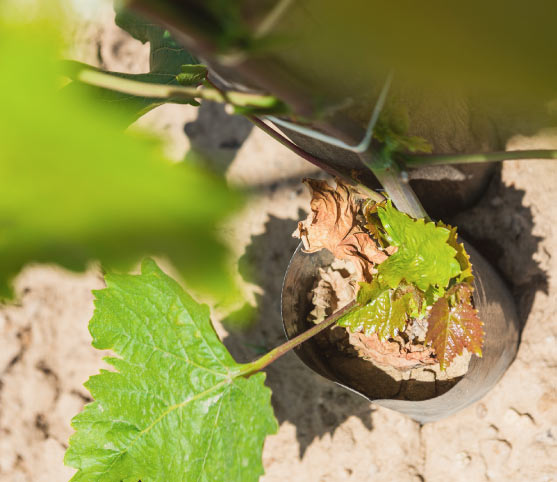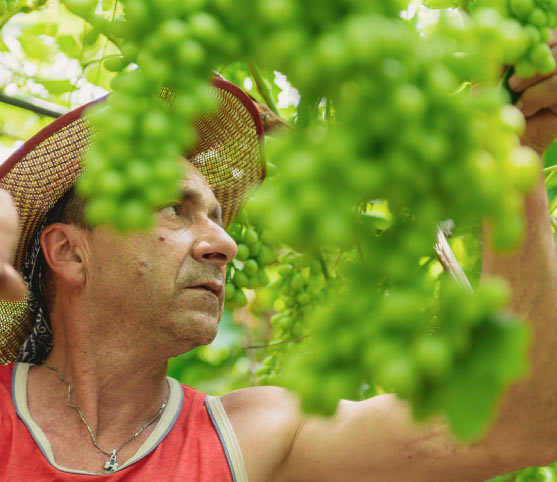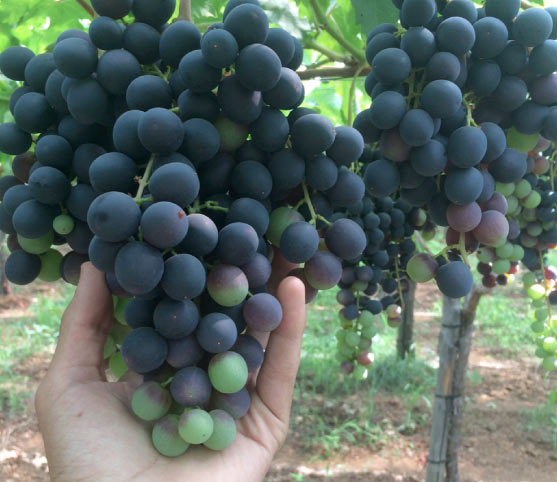Productive cycle of table grapes
A passion passed down from generation to generation

Preparation of soil
Before planting vine, or vine plants, we choose the most suitable climatic period which is summer in Apulia, our dwelling. In fact, our climate contributes to the fragmentation of clods (process called “a scasso”). The check and the preparation of soil are very important also because the most appropriated plant is ever selected.

Graft and disposition of installation
The graft of vine in Apulia is made between January and March. Planting already grafted vine plants, we obtain fruits after 2 years. When on the contrary we choose graft on soil, we realize it in the first months of the successive year.

Varieties’ graft
Graft is a particularly important and delicate operation made from our specialized agronomist. Failed germination would lead to a loss of production and obligation to wait the successive year to graft not-germinated plants. There were various graft’s technics and that which we used is called “a spacco”.

Various operations
Wintry pruning
Germinated plants are to be lead and attached to the tutor up to the production’s wire to be pruned every year during winter. The wintry pruning serves to equilibrate and constitute the plant, facilitating a production of table grapes constant in time. It consists in the elimination of bines which had already produced fruit, offering more space to the new bines for the new season.

Green pruning
Green pruning is a spring operation which consists in reduction of buds, shoot pruning and soft defoliation. The green pruning’s operations act on the potential fruit production and on the increase of product’s quality.

Girdling and millerandage
In order to increase berry’s dimensions, for the varieties which need it, we make girdling’s operations, consisting in the cutting of stump in order to stop the descendant flux of lymph and the reduction of bunch or smaller grapes before the maturation.

Defoliation
Defoliation is executed in our vines in various periods of the year, in order to give more airing and lightening to the grapes without expose them too much to the solar radiations. We habitually eliminate leafs from basal section because they’re not photosynthetically active.

Harvest
The calendar of our table grapes cover a period from June to December depending on the maturation of every single variety. Harvest is rigorously manual. Packaging happen directly in the vineyard in wood boxes or paperboards in order to avoid too much manipulation which can damage the exterior aspect of grapes separated with sponge to reach every destination without alterations.

Conservation
Grapes are a very delicate fruit but, on the contrary of what we think, is among the most resistant to long conservation and long trips. Thanks to the modern conservation’s technics, we allow it to join also farthest markets. After the harvest, grapes is packed on pallets and sent in store in order to be sent fresh. For overseas expeditions it’s conserved in refrigerated cells with appropriate packings to avoid the development of bacteria on bunch. Grapes is subject to a fast temperature’s decrease (-5 C) to be then conserved at 0 C.

Other operations
As well as the principal activities, other operations cannot be forgotten. The irrigation with suitable methods for the saving of hydric resources; coverage of vineyards with hail nets, cloths for rain protection, advance or delay production, fertilization’s operation and phytosanitary treatments. Thanks to Protocol Integrated Pest, who choose our table grapes can count on a reduced use of pesticides damaging for human and for the ecosystem useful to the natural maturation of grapes.
Grapes-based recipes
From starter to dessert
Table grapes, fruit with a thousand varieties, rich of healthy salutary properties, perfect to eat at the end of the meal but also precious ingredient for a lot of tasty recipes.
As starter to flavour crostoni or ingredient for the preparation of risotto; grapes offer something more in kitchen: we selected three recipes, from starter to dessert, by Valentina De Palma, known for participating to transmissions on Gambero Rosso, La7 and for broadcasting “Chef in tacchi a spillo” on Telenorba.
